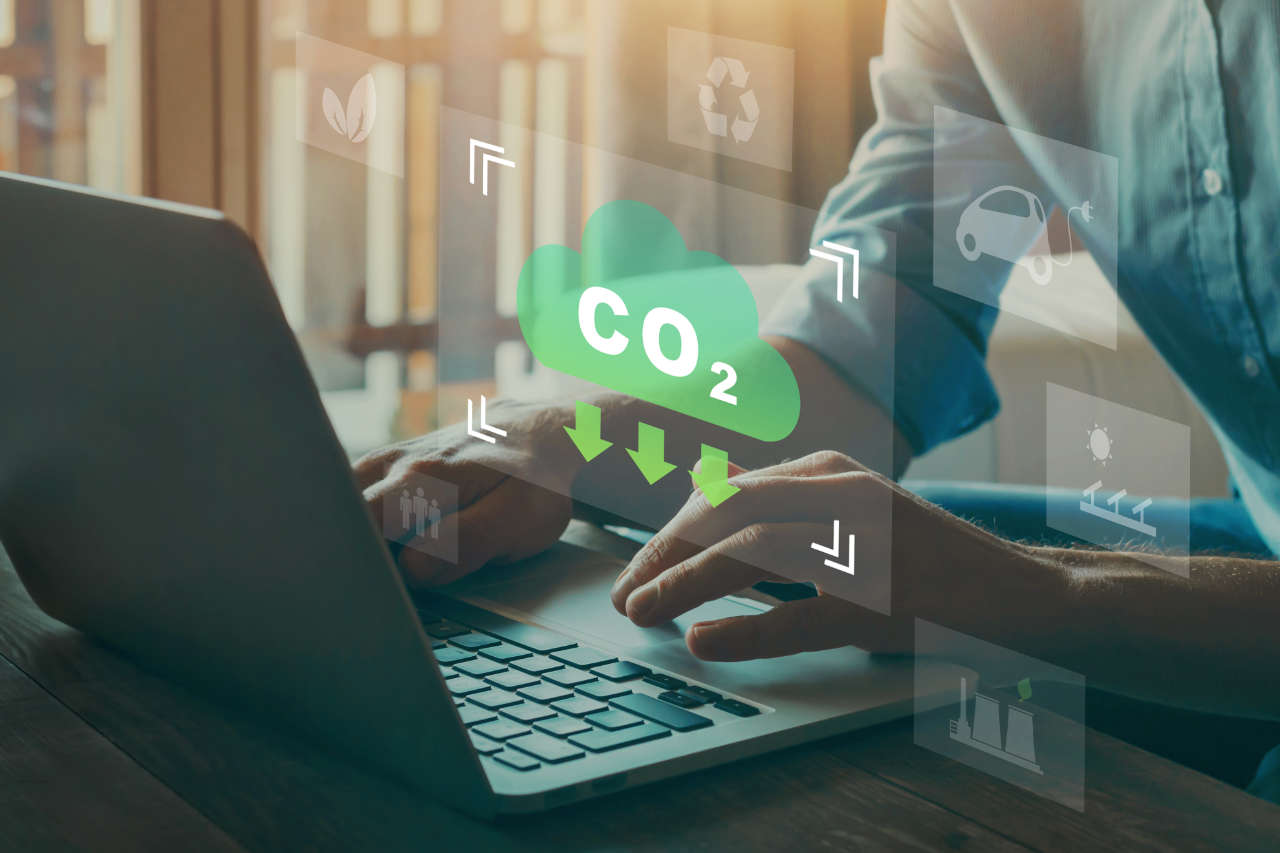There’s an urgency for Irish businesses to become more sustainable and aware of the impact of their activities on the environment, as outlined by the Irish Climate Action Plan. This plan aims to “put Ireland on a more sustainable path” by reducing overall greenhouse gas emissions (GHG) by 51% by 2030 and reaching net zero by 2050.
The Climate Action Plan encourages small business sustainability by having organisations prioritise sustainable business practices and behaviour, such as using renewable energy sources and producing recyclable products, over more environmentally-damaging activities. The Central Statistics Office reported that 99.8% of all enterprises were SMEs in 2020, meaning small business sustainability will have a considerable part to play in helping to reduce the nation’s GHG emissions.
Your organisation may be unsure where to start when creating an environmental sustainability business strategy or tackling small business sustainability. If you’ve wondered how to make your business more sustainable, ISO standards such as ISO 14001 and ISO 50001 can play a role in environmental and energy management systems.

How can being ISO 14001-certified help?
ISO 14001 is the global standard designed to help organisations, large and small, demonstrate their environmental credentials by implementing an environmental management system (EMS). It was developed by the International Organization for Standardization (ISO).
Help your organisation meet environmental compliance regulations with our free ISO 14001 online training course.
An EMS helps businesses measure, manage and control their environmental impact, which can help them stay in line with environmental legislation through effective risk management and environmental controls, processes and documentation.
Organisations that are ISO 14001-certified can enjoy a competitive edge due to more efficient operations, lower waste and energy costs, and attract customers, stakeholders and investors keen to work with businesses that have an active environmental, social and governance (ESG) strategy.

Practical steps to take towards small business sustainability
1. Communicate your sustainability plans and goals
When tackling organisational initiatives such as sustainability, employees, managers and business leaders must be aware and fully informed. This ensures that your workforce is committed to change and best practices. Ideally, your business should engage employees from the start of your environmental journey in order to provide feedback and raise questions to will help shape the action plan and mission statement.
Communicate your sustainability goals internally and externally to stakeholders, customers and investors. Identify where sustainable issues in business affect your organisation and the steps you are taking to tackle them. Publish environmental targets and regularly update with your progress, such as releasing a sustainability report or creating a dedicated sustainability hub on your corporate website, such as these examples from Applegreen and Gas Networks Ireland.
2. Set sustainability targets and measure progress
Broad sustainability ambitions are one thing – having concrete KPIs to aim for can ensure your business activities are aligned to achieving success, such as reducing energy usage or improving waste management planning, is another.
Creating a sustainability plan involves setting goals to inform actions taken and how the results can be best measured. A good starting point is to conduct an environmental audit of your business’ impact and environmental management systems and then regularly calculate your business’ carbon footprint to measure progress in line with your sustainability goals.
Consider ISO 14001 certification for your environmental management system.
Actively monitor and measure progress against goals and targets. This can involve simple steps such as encouraging employee feedback on areas to improve through to more formal internal assessments of environmental or energy management systems. Measure progress, such as waste sent to landfill, then regularly review progress and implement changes that reduce this, such as shipping waste materials for recycling.

3. Build a green supply chain as part of your environmental sustainability business strategy
Energy and waste are both used and produced at all stages of the supply chain, from sourcing materials and manufacturing to shipping finished products to distributors or customers. Assess the entire supply chain – from materials and energy supply to manufacturing processes and logistics – and identify areas for improvement. A sustainable supply chain focuses on more efficient materials and energy use, such as reducing GHGs by sourcing renewable energy or using electric vehicles for transportation.
As well as physical policies, such as using carbon capture technology during the manufacturing process, you could consider digitising the supply chain. Scope 3 emissions are those produced by assets that aren’t controlled by the reporting business. However, organisations are now being pushed to be responsible for these indirect emissions. Digital transparency and reporting allows you to get a full picture of all emissions created by suppliers and materials used, directly and indirectly.
4. Monitor waste management
Waste is an important part of sustainability – producing too much waste can have a harmful impact on the environment when it isn’t reused or recycled. Waste can also occur at the end of a product’s life, such as electronic waste in landfill. Identify where your business produces waste, including disposal of goods produced, and consider implementing schemes as such repair, replacement or recycling services for a more sustainable approach to end-of-life products.
5. Improve energy usage across sites and operations
Improving your business’ energy usage as part of a sustainability strategy can work on both a small and large scale.
Small changes, such as encouraging employees to turn off lights and equipment in the office when vacant can help reduce energy usage, whereas investing in carbon capture machinery and working with sustainable energy suppliers can more dramatically impact your organisation’s environmental footprint.
Consider implementing an energy management system and gaining ISO 50001 certification to help improve energy efficiency and reduce carbon emissions.




